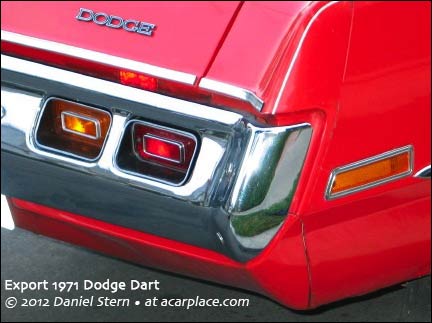
What color should rear turn signals be? In North America they’re usually red, and can also be amber. Almost everywhere else in the world, they have to be amber.
Traffic moves and changes quickly. Fractions of a second make the difference between a crash and a miss. That means that clear, unambiguous brake and turn signals must convey their message without requiring any unnecessary decoding — as in, a red light = brakes and amber = turn.
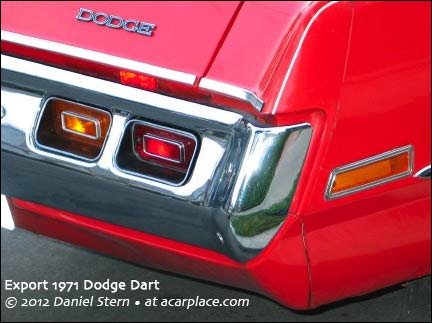
Amber wins over red even without the less dramatic niceties: in traffic, drivers looking well ahead can make better decisions about lane changes; traffic congestion is reduced. But safety regulations aren’t based on common sense; they’re supposed to be based on evidence, facts, and science. So what are the facts?
In 2008, NHTSA (the U.S. National Highway Traffic Safety Administration, responsible for writing U.S. vehicle safety standards) released tentative findings that amber (“yellow”) turn signals are up to 28% more effective at avoiding crashes than red ones. Then, in 2009, they released preliminary findings that across all situations, including those in which turn signals don’t matter, vehicles with amber rear turn signals are 5.3% less likely to be hit from behind than otherwise-identical vehicles with red ones.
That means amber turn signals were seen as being more effective at avoiding crashes than the center third brake light (CHMSL) mandated in 1986 (with a 4.3% crash avoidance).
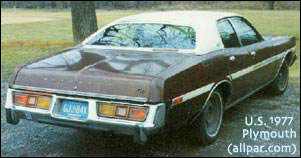 Those are important first steps, but the slow pace and lack of action is frustrating. This isn’t unknown territory, an unproven new technology, or even an expensive proposition. Amber rear signals are required in Europe, Australia, New Zealand, Asia (including Japan, China, and Korea), South Africa, and most of South America.
Those are important first steps, but the slow pace and lack of action is frustrating. This isn’t unknown territory, an unproven new technology, or even an expensive proposition. Amber rear signals are required in Europe, Australia, New Zealand, Asia (including Japan, China, and Korea), South Africa, and most of South America.
Outside North America, red turn signals have been banned almost everywhere for 35 to 55 years.
There has been support for amber signals in America since the 1960s; indeed, in 1963, amber front turn signals replaced white ones, because amber is quickly separated from white headlights and reflections of sunlight off chrome. But automakers rejected amber rear signals as “not cost effective.” Volkswagen’s 1977 study concluded amber rear signals are better—but now they use red ones on their American cars.
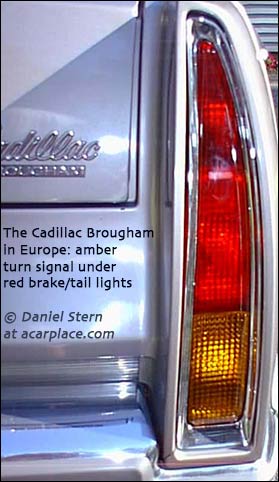 Fifteen years ago the University of Michigan Transportation Research Institute, one of the world’s most respected vehicle safety research outfits, determined that following drivers react significantly faster and more accurately to the stop lamps of a vehicle with amber rear signals versus red.
Fifteen years ago the University of Michigan Transportation Research Institute, one of the world’s most respected vehicle safety research outfits, determined that following drivers react significantly faster and more accurately to the stop lamps of a vehicle with amber rear signals versus red.
American regulators, alone in the world, have dismissed the idea that there might be something wrong with trying to convey two very different messages with two (or just one!) identical red lights. So automakers play “now it’s amber, now it’s red” with rear turn signal color in the American market: amber this year, red next year, back to amber at the next facelift. Even imports have red rear signals in America, sometime because stylists will use any tool at their disposal to differentiate this year’s model from last year’s.
Stylists don’t deserve all the blame. In America, the brake light and rear turn signal must each have a lit lens area of at least 50 cm2 (7¾ in2). The American regulation calls this lit lens area “EPLLA” for Effective Projected Luminous Lens Area. This minimum-size requirement doesn’t exist outside America. It’s not such a big deal on a large vehicle where there’s plenty of space for a large rear lamp, but on smaller rear lamps space is at a premium. There often isn’t room for two lamps of at least 50 cm2, so that makes a design constraint.
American regs say rear turn signals can be implemented by flashing the brake light, so the automaker needs to have only one lamp of at least 50 cm2 per side. Problem solved; the red combination brake/tail/turn lamp is legal. But should it be? Is it good enough?
It has the safety drawback of red instead of amber. And with a combination lamp, a driver braking and signaling at the same time shows other drivers only two-thirds of a full brake light indication. A driver getting on and off the brakes while the turn signal’s on creates a confusing mess of flashing red lights, and a faulty lamp takes out two crash-avoidance light functions instead of just one.
So it’s a plus-one, minus-one situation; America gets along without the safety benefit of amber rear turn signals on all vehicles, and the rest of the world gets along without the safety benefit of minimum signal size requirements, right?
Well…no, actually, and here’s why: there’s a good pile of evidence that amber signals do a better job than red ones, but there’s no safety-related reason for the minimum lit-size requirement. There never has been.
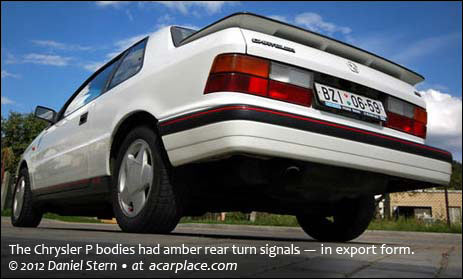
The minimum size was adopted in the mid-1950s when a Society of Automotive Engineers lighting committee met in Arizona and evaluated cars with different rear lighting configurations. The engineers peered at the cars as they were driven away, then voted on which systems they thought looked okay. There were two reasons for specifying minimum lit area: the lens plastics available in the 1950s weren’t very colorfast or heatproof, and requiring a minimum lit area was a way to ensure, without design-restrictive explicit requirements, that the lens would be a minimum distance away from the hot bulb, to stave off fading and cracking.
The other reason was to do with glare and how bright a lit surface appears – the luminance of the surface. It’s not the same as intensity, which is how much light a lamp is producing. It’s intensity, not luminance, that determines how effectively a brake or signal light conveys its message to other drivers. But luminance bears consideration, too: a given amount of light can appear more glaring when it’s coming from a relatively small surface, because the light is “denser” – the luminance is higher – on the smaller surface than on a larger one. The minimum lit area requirement acts together with the maximum intensity requirement as an indirect, implicit luminance limit to turn addresses a theoretical concern that a very bright, very small brake or turn light could be too glaring when viewed at close distances. [Editor’s note: this turned out to be a problem anyway, as the US allows brake lights to be too intense. New technology (LEDs) in the absence of an actual luminance limit resulted in that glare problem.]
The last time NHTSA looked at the issue, in 1993, they found no evidence that a 50-cm2 lamp is any more effective at preventing crashes than a smaller lamp of the same intensity. NHTSA also found no evidence of a glare problem with relatively small signal lights, because a smaller lamp’s higher luminance and lower intensity balanced out pretty well with a larger lamp’s lower luminance and higher intensity. So why didn’t they change it?
“We don’t find any dispositive reason to keep the requirement, but we also don’t find any dispositive reason to eliminate it,” concluded NHTSA’s report. So they kept it. That was before NHTSA’s own good evidence saying amber signals work better. Maybe now there’s a reason!
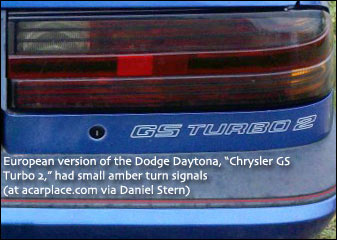
At that time, LEDs were not yet used in primary car lights; brake and signal lights all had the familiar incandescent bulbs. And the light-dispersing surface was the lens itself, which had optical patterns on its inside surface to distribute the bulb’s light collected and amplified by the reflector. This meant the whole lens area where light was traveling through was…lit! From any viewing angle and any distance, the entire lens area appeared luminous.
Then came more advanced optics, giving us crystal-clear lenses; optics were moved to the reflector to create a jewel-like appearance. No longer was the whole lens lit, but instead at close distances we see very bright spots and lines of light surrounded by dark bands and spaces. The same is true with many LED lights, which show bright dots surrounded by dark spaces. LEDs with small total area can produce high intensities that would require much larger area with a bulb-and-reflector setup. With these changes, the minimum lit area requirement no longer has any relation to the luminance or intensity produced by a car light. It’s an obsolete requirement that now stands in the way of the real safety improvement we could have if all vehicles had amber rear turn signals.
Suppose tomorrow someone waves a magic wand and the EPLLA size requirement vanishes. Automakers still like the styling freedom to choose the turn-signal color, amber or red. So we can solve most of the problem by getting rid of combination brake/turn lights, right? Well…no. All we do is exchange one set of problems for another.
With separate red brake and turn signals we have identical – and dueling – red lights right next to each other. If the driver of a Golf, Jetta, Passat, Sonata, X5, Q5, Accord coupe, or any other car with red turn signals right next to the brake lights is braking and signaling at the same time, the turn signal is practically invisible until the car behind is about to drive up the tailpipe. And here again, if the driver’s getting on and off the brake while signaling, just forget about unscrambling a coherent message from the mess of flashing red lights in the fractional moment available at speed in traffic.
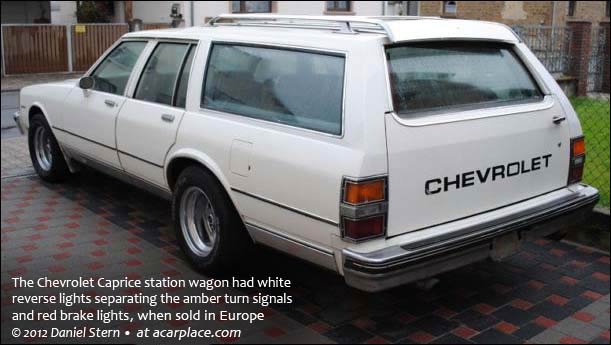
Some of the problem goes away if the two identical red lights, the brake light and the turn signal, are widely separated from each other. It’s instructive to look at the ECE regulations, used just about everywhere but in North America. They don’t allow red rear turn signals, but they do require two bright red lights in the back: the brake light and the rear fog light, an extra-bright tail light activated by the driver when it’s foggy, so following drivers can still see the car. They look similar to each other, just like the American red brake and red turn signal, so the ECE regulations say their closest lit edges have to be at least 10 cm (4 inches) apart. That way, drivers have no problem seeing and discerning both functions. But there’s no such separation requirement for brake lights and red turn signals in American regulations.
Even with the lit-size requirement, amber rear signals have never been really tricky or costly or difficult. American cars were being sent to Australia with amber rear signals back when Ward and June were scolding Beaver Cleaver for leaving his bike in the rain. Countries like Australia accommodated U.S. cars by allowing reversing lights to be amber or white: signal for a parallel-parking job, shift to reverse, and one amber light burned steadily while the one on the signal side flashed. Meanwhile, both red brake lights lit steadily.
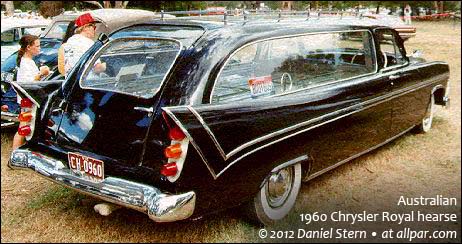
It was not a bad solution; in America we have amber or white front parking lights and amber or white daytime running lights, so everyone in America knows that a pair of steady amber lights means you’re looking at the approaching end of the vehicle. The reversing light is a secondary, seldom-used light function, so there’s much less consequence of piggybacking it onto the turn signals than piggybacking the brake and turn lights. Today’s amber turn signals are often bigger and brighter than tiny, dim white reversing lights.
Even without that kind of a change, it’s hard to think of any actual car designs that lack ample space for big-enough, bright-enough, good-looking red brake and tail lights, amber turn signals, white reverse lights, and perhaps red rear fog light functions. All it takes is a sensibly written regulation in line with the science, evidence, and facts. We don’t have that right now.
Canada has long wanted to mandate amber lights, but is handcuffed to U.S. regulations by the threat of free-trade court action. There was an international effort to develop a single global lighting equipment standard based on best practices worldwide, saving money and improving safety; there would have been one standard to which an automaker could build and have a vehicle acceptable throughout the world, but if an automaker still wanted to build to specific national standards, that would have remained legal (in those countries). The effort was killed by U.S. insistence that the rest of the world would have to roll back their regulations to the 1950s and accept red rear signals. So much for “best practices!”
Shortly after releasing their tentative and preliminary 2008-09 findings, NHTSA opened a public docket requesting comment on the matter. Naturally, there are opinions on both sides. But it’s interesting to see how many ordinary drivers, with no ulterior motive or axe to grind, strongly urged NHTSA to please require amber signals.
Perhaps it’s time to think about taking a deep breath and moving the American turn signal regulation boldly into line with what the rest of the world has known since before the Beatles.

I hate red rear signals. I have no idea why VW changes it for North America but has amber for the rest of the world. I had to convert my 2007 Jetta to European lenses. The red rear signal here is almost invisible. You can actually see the amber signals in the mirrors before you see the rear tail signals.
Hello Ian, we are just about to relocate and take our 2005 Jetta to the UK. Did you have to replace the outer lenses to produce the amber turn signals or did you find a less expensive option?
In the UK we also need to provide a rear fog light on the right side, so have to replace the inner rear lights also, Did you do that too or where you keeping your car in USA?
This has to be one of the most fascinating and intelligently written articles that I’ve read in about the past 3 months. Car lights– their shapes, colors, and placement– have fascinated me since I was 5 years old. So nice to see an entire article dedicated to one of my most pronounced childhood obsessions.
Very interesting article.
I agree with you that amber signals are much less confusing and clearer to drivers and road users. However, some red turn signals are more stylish, unique, and beautiful in my opinion. Like the Ford Mustang’s sequential signals or some Audi models which the whole taillights will flash to indicate turning signal. Although I believe safety is prior to style and beauty.
In my experience, I found those vehicles with sperate red signal and tail/brake lights more illustrative than those with one red light functioning as signal+brake+tail light. But some vehicles because of not observing the distance between the lights do not send a clear and understandable message as others with a distance between the two red lights.
But I have to say because of intensity, even cars with a single red light functioning as 3 lights are significantly different. For example Volkswagen Jetta has a terrible lights, but Dodge Caravan has much better lights; while braking and signaling as the same time in both cars, because of significant difference in the intensity of signal and brake light in the Caravan, it’s way easier to distinguish the two than Jetta which has almost no contrast to distinguish the three functions.
Finally, I was surprised to learn that my country (Canada) was trying to mandate the amber signals but failed because of the US. could you please refer me to the reference of this information?
Keep rocking.
Thank you for the most intelligent and well-researched article I’ve ever read on the subject. One question: NHTSA had recently proposed a scoring system based on various attributes for automakers to achieve 5-star NCAP status. One of these items was supposed to be amber turn signals. However, I cannot find any info on the current status of this attempt. Any idea if this is dead with the current trend of de-regulation?
What a fantastic article. I was referred from vwvortex and, maybe with the scism between Canada and the U.S. now, maybe Transport Canada will mandate rear amber turn signals. Also, Audis do have sequential amber turn signals in the rest of the world. The bigger issue is discernability between colours and not surface area, because LED signals with a smaller surface area are far brighter and visible than signals with incandescent bulbs having a larger surface area. Why not a white LED with an amber lens?
I have to say I’ve never been confused by red brake lights and turn signals in fifty years of driving (the last twenty driving for a living). It’s easy to discern the difference between a red brake light steadily glowing on one side and a steadily blinking red turn signal on the other side. I HAVE been distracted by the brightness of rear amber turn signals, however, and have been irritated by that distraction as it affects my ability to see at night. I think this is all much ado about nothing.
That is your opinion and you are entitled to it. However, all of the data shows amber to result in fewer crashes. The NHTSA study of 2009 in particular is interesting because it focused on identical vehicles where the only difference was that the color of the turn signal was changed from amber to red or vice versa as a stylistic change, allowing it to be isolated. Over 5% reduction in collisions from that change alone. There have been other studies consistent with the result, and it’s no coincidence that virtually all countries outside of US/Canada require amber.
My personal opinion is contrary to yours. I find that red can be confusing and blend in with a sea of red lights, causing slower reaction to the turn signal. This depends on the implementation, the worst being a single multipurpose bulb with red lens on each side of the vehicle.
Our opinions only matter so much, that’s why we look at data. Every nanosecond makes a difference, and in this case it translates to a meaningful increase in safety at extremely minimal and— in some cases—no cost to automakers and consumers. That’s a winner.
Both my wife and I find red turn signals to be confusing, especially when a driver brakes intermittently at the intersection – are they braking? are they turning? what’s going on? This is worsened when you can only see one side of their vehicle.
Red, green, yellow, or blue doesn’t matter to me. If it blinks on the right side of the vehicle he/she is gonna turn right, and if it blinks on the left…well, you get my point. The BLINK say’s it all.
This is a fascinating subject and with the current color shifting LED technology, maximum safety should be well within our grasp. It just takes a bit more research and development of standards. NHTSA should be leading rather than dragging their feet. It’s un-American.
On the other hand, we have an entire segment of car owners and aftermarket product makers that are hellbent on defeating tail light and side marker effectiveness by darkening the lens or removing side markers. Those knuckleheads should be proscecuted when accidents result from their actions.
I would always buy a car with amber turn lights over red for personal safety. There is no “styling” benefit to all red rear lights.
So here are my thoughts and based on the us automotive industry not going along with the rest of the world I doubt my idea will ever happen
Rear lights should be like traffic lights
When the gas pedal is engaged the tail light would be green
When the driver takes his foot off the gas, but has not yet engaged the brake the tail light goes from green to yellow
Then red when the brakes are applied
In my opinion this would dramatically reduce rear end collisions
Who wants to join me on Shark Tank
Howie Guttman
So is it safe to replace front blinkers with clear bulbs??
The rest of the world need to implement side marker lights like in America and Canada, The added visibility, and drawing attention to the side of a car in the dark has been proven to decrease accidents as well. It’s a lot less important for a car to see the side turn indicator lights on cars from the side, than to see the car itself, whether the front of a car is coming out of an intersection, or ahead of you on a dark road.
Rear-amber turn signals started to appear on cars back to the early 1970s and the system seamed to work very well. Then as the 1990s approached, the rear-amber turn signals started to disappear. As a professional designer since 1978, I think a number of America’s automakers caved into their interior design departments who were pushing for a “less busy” look and going all-in on all-red. It’s a shame that it comes down to fashion. It is also a bit silly that American cars have to make rear-amber turn signals for international sales and then go through an extra production just for the American market. I will used my designer brain and go with safety over designer fashion any day. When it comes to safe driving, function should prevail over fashion.
based on the article and pictures, it seems the amber signals pre-date the 70s, unless you’re saying it became trendy for American vehicles only at that time?
Been a huge fan of Daniel Stern’s site and writing for some time. Great article. Wish the US would adopt a requirement for amber turns in the rear! I could buy them for my 2014 E-class but I think they’re about $700 each because one can only buy the entire housing with the LED’s already inside.
FJU, I just replaced the bulbs in my( 2000 SE Cougar ) for the passigner side brake lights with SYLVANIA LED bulbs.
No problem, works great!
I have thought about putting the amber color SYLVANIA LED bulbs in the turn singles. With the red lines they would appear amber.
I think with the back lights on this car that this would make a difference!
Is it a law that the back turn singles have to be red?
It is not smart to put fashion before safety, I had a 1980 TB Silver anniversary edition once, yes it was a nice looking car with red lights going all the way across the back, but how safe was it?
I was only rear ended once in that car.
Rob
I find this to be an amazing article, I have always been interested in lights on cars.
Right now I am planing to put Day time Driving lights on my 2000 SE Cougar.
Some times I use the fog lights as Day time Driving lights.
I have a 1998 Lumina LTZ and it has day time driving lights, I am wondering if the car was made for Candida because that is a standard for Canadian cars.
Rob
Bravo! I have been a fan of amber rear turn signals since 1971,when my buddy Dennis convinced me to change the red rear t/s lenses on my Triumph Spitfire to amber.Way better! I have converted 5 cars since,including a 1980 Chevy van.Ironically my wife drives a 17 Jetta with the barely visible when brake lights on red turnsignals.Like to find European amber lenses buf afraid of the cost!
I truly believe that all new cars and SUV’s should all come with rear Amber turning signals because it is that way throughout the world, the US is one of the few that does not incorporate this to there vehicles witch is a massive mistake in there part.
Fan-bloody-tastic, well-researched article! I could not agree more.
In the mid-80’s, when I bought a car with red rear turn signals immediately adjacent to the red brake lights, I swapped the red lenses for yellow within days. I had the car for 30 years, and was SO glad that I did that each and every ding-dong day.
I’ve been trying in vain for the last two decades to find an amber rear signal solution for a Ford Expedition. Surprisingly, with a 2017 German car, I’ve been coming up empty searching for amber signals for the integrated brake/turn lights. Drives me crazy.
Red rear turn signals is as American as apple pie so let’s keep it that way.
great article
love the amber turn signals
red & combination I hate
red you can’t see at night or day!
thats why I like to see American vehicles old or new what they look like overseas
Daniel,
You touched on but didn’t go into detail for cars where the flashers override the brake lights. In the past, as noted, there have been some cars where the brake and turn signal shared the same lighting element. The result, for some of these cars, the emergency flashers override the brake signal. Arguably, this is acceptable for cars with the third brake light. But I’m wondering if current DOT regulations allow for the emergency flasher to override the brake signal in the normal taillights?
Every vehicle in the world other than the US has amber turning signals installed into them. We are the only country in the world that does not have them. That make us very sad thought out the world.
Amber/Yellow rear Turn Indicators are the International Standard and I demand them on my Cars. I am refusing to purchase a new Mercedes Benz, Audi and several others that continue to have Red Rear Turn Indicators on vehicles built for the USA. This is not the best Safety color as your article above clearly communicates. Wake up Auto Industry and get with the program!
I think that the data about amber being safer says more about our pandemic of inattentive drivers than it does the color. I’ve been driving for 20yrs and have NEVER been confused by a red turn signal. What looks better is subjective and if I had my choice on a car, I’d always choose red rear turn signals